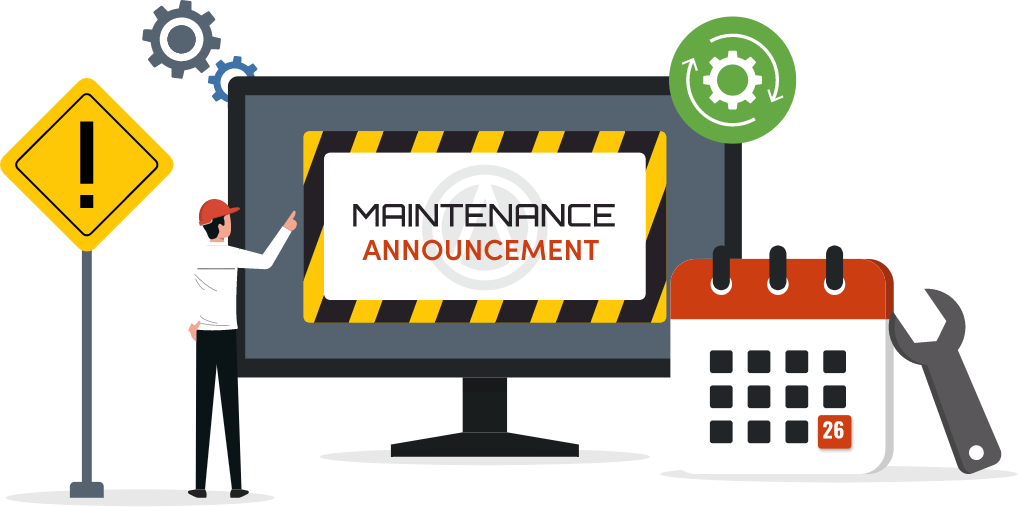What are the key financial statements restaurant owners should track?
Restaurant owners should regularly review the income statement, balance sheet, and cash flow statement to monitor profitability and financial health.
The Ultimate Guide to Restaurant Accounting
Overview
Owning a restaurant isn't just about cooking great food or keeping customers happy - it also means keeping a close eye on your money. Without good accounting habits, even popular restaurants can lose money and struggle to stay open. In fact, studies show that nearly 60% of restaurants fail within the first year, and poor financial management is one of the main reasons why.
Restaurant accounting helps you understand exactly how much money is coming in from sales and how much is going out for things like food, staff wages, rent, and supplies. When you know where your money is going, you can make smarter choices - like adjusting your menu prices or finding ways to cut down on waste.
The tricky part is that restaurant finances are different from other businesses. You have to deal with things like food spoilage, tip reporting, and fluctuating costs from suppliers. That's why learning the basics of restaurant accounting is so important.
The Core Principles of Restaurant Accounting

Before diving into the day-to-day tasks of managing your restaurant's finances, it's important to understand the basic principles that form the foundation of restaurant accounting. These concepts help you track your money correctly, avoid mistakes, and make better business decisions.
The first thing to know is that restaurant accounting is different from regular business accounting. Why? Because restaurants deal with a fast-moving mix of sales, inventory, labor costs, and tips - often changing daily. So getting a clear picture of your finances means understanding a few key ideas.
Cash vs. Accrual Accounting
There are two main ways to track income and expenses - cash accounting and accrual accounting.
- Cash accounting records money when it actually moves - when you receive payment or pay a bill.
- Accrual accounting records income and expenses when they happen, even if the money hasn't changed hands yet.
Most small restaurants start with cash accounting because it's simple. But as your business grows, accrual accounting can give you a more accurate financial picture - especially when dealing with vendor credit or prepaid costs.
Important Terms to Know
Here are a few basic accounting terms every restaurant owner should understand -
1. Revenue - All the money your restaurant brings in from food, drinks, and other sales.
2. Cost of Goods Sold (COGS) - What it costs you to make the items you sell (like ingredients for meals).
3. Gross Profit - Revenue minus COGS. This shows how much money you make before other expenses.
4. Operating Expenses - Things like rent, wages, utilities, and marketing.
5. Net Profit - What's left after you subtract all expenses from your revenue. This is your real profit.
Understanding these basic principles makes it much easier to track performance, catch problems early, and grow your business with confidence. Good accounting isn't just about paperwork - it's a daily tool for smart decision-making.
The Smarter Choice for Maximizing Your Financial Potential
Streamline Your Restaurant's Finances with Altametrics!
Essential Financial Statements
Financial statements are like a health check for your restaurant. They show you where your money is going, how much you're earning, and whether or not your business is on the right track. Even if you're not a numbers person, learning how to read these three basic statements can help you spot problems early and make better choices.
1. Income Statement (Profit & Loss Statement)
This is the most important financial report for any restaurant. It shows how much money you made (revenue), how much you spent (expenses), and what's left over (net profit or loss) during a specific time period - usually weekly, monthly, or yearly.
Here's a simplified breakdown -
Sales - Total income from food, drinks, and other services
COGS (Cost of Goods Sold) - Cost of ingredients and other items sold
Gross Profit - Sales minus COGS
Operating Expenses - Rent, utilities, wages, etc.
Net Profit/Loss - What's left after all expenses
This statement tells you if your restaurant is making or losing money and why.
2. Balance Sheet
Think of this as a snapshot of your restaurant's financial position at a specific point in time. It lists -
Assets - What your business owns (cash, equipment, inventory)
Liabilities - What you owe (loans, bills)
Equity - Your ownership value in the business
A healthy balance sheet means you have more assets than debts.
3. Cash Flow Statement
This shows how money is moving in and out of your business. It helps you see if you have enough cash on hand to pay bills, cover payroll, or make new investments - even if your income statement looks profitable.
Together, these statements give you a full picture of your restaurant's financial health. Reviewing them regularly - at least monthly - can help you stay in control and avoid unpleasant surprises.
Building a Restaurant-Specific Chart of Accounts
A chart of accounts (COA) is a list of all the financial categories your restaurant uses to organize income, expenses, assets, and liabilities. Think of it as the filing system for your restaurant's finances. If it's set up the right way from the start, it makes tracking money much easier and helps you stay organized when it's time to review reports or file taxes.
Why a Restaurant-Specific COA Matters
Restaurants have unique needs compared to other businesses. You're dealing with a mix of food and drink sales, different types of labor, inventory purchases, and operating costs that can change week to week. A generic chart of accounts won't give you the detailed view you need to manage your costs or spot trends.
What to Include in Your Chart of Accounts
Here are the key sections every restaurant's COA should have, with examples -
1. Revenue (Income) Accounts
- Food Sales (Dine-In, Takeout, Delivery)
- Beverage Sales (Alcohol, Non-Alcoholic)
- Catering Income
- Gift Card Sales
2. Cost of Goods Sold (COGS)
- Food Ingredients
- Beverage Inventory
- Packaging Supplies
3. Labor Costs
- Kitchen Wages
- Front-of-House Wages
- Payroll Taxes
- Employee Benefits
4. Operating Expenses
- Rent and Utilities
- Insurance
- Equipment Repairs
- Marketing and Advertising
- Cleaning and Sanitation
- Licenses and Permits
5. Other Accounts
- Assets (e.g., kitchen equipment, cash on hand)
- Liabilities (e.g., loans, unpaid bills)
- Owner's Equity
Tips for Setting It Up
- Use clear, consistent names so it's easy to understand later.
- Don't overcomplicate it - start with essential categories and add more only if needed.
- Review it once or twice a year to make sure it still fits how your business operates.
Having a well-organized chart of accounts gives you cleaner reports and helps you see exactly where your money is going - so you can make informed decisions faster.
Managing Restaurant Revenue and Expenses

One of the most important parts of restaurant accounting is keeping close track of how much money you're making - and how much you're spending. Managing revenue and expenses properly helps you spot problems early, avoid waste, and keep your restaurant profitable.
Tracking Daily Sales
Start by recording all types of income every day. This includes food sales, beverage sales, catering, delivery, and even gift card purchases. Break them down into categories so you can see which areas of your business are performing best. For example, you might find that lunch sales are strong but dinner needs improvement.
Also, don't forget to track tips and service charges. These need to be handled carefully for payroll and tax purposes. Keep a clear record of how tips are distributed between employees and how they are reported.
Managing Expenses
Restaurants have a mix of fixed and variable costs.
- Fixed costs are things like rent, insurance, and internet - expenses that stay the same each month.
- Variable costs change based on how busy you are. This includes food, drinks, hourly wages, and utility bills.
Keep receipts, invoices, and records of every purchase, no matter how small. It all adds up. Create separate expense categories so you can see exactly where your money is going - like food ingredients, cleaning supplies, or advertising.
Controlling COGS
COGS (Cost of Goods Sold) is one of the biggest expenses in any restaurant. You can control it by -
- Tracking inventory regularly
- Reducing waste and spoilage
- Training staff on portion control
- Monitoring vendor prices
Even small changes, like adjusting portion sizes or improving ordering habits, can make a big difference in your profit margins.
By managing both revenue and expenses with care, you'll have a much clearer view of your restaurant's financial health - and more control over its future.
Labor Costs, Payroll, and Tax Responsibilities
Labor is often the largest ongoing cost for a restaurant, sometimes making up 30% to 35% of total sales. If not managed carefully, it can quickly eat into your profits. Understanding how to calculate, control, and report labor costs is essential to staying financially healthy - and legally compliant.
What Makes Up Labor Costs?
Labor costs include more than just hourly wages. Here's what to account for -
1. Wages and salaries for all staff (front-of-house, kitchen, managers)
2. Overtime pay for hours worked beyond standard limits
3. Payroll taxes that the employer must pay (Social Security, Medicare, unemployment taxes)
4. Employee benefits, such as paid time off, health insurance, or bonuses
5. Tips and gratuities, if applicable
Make sure you track actual hours worked, not just scheduled hours, and monitor how labor costs compare to your daily and weekly sales.
Handling Tips Correctly
Restaurants that rely on tips must follow strict rules about reporting and payroll.
- All tips earned by employees must be reported and included in payroll records.
- Tip pooling (if used) needs to follow legal guidelines.
- Employers must ensure that tipped workers earn at least the minimum wage when tips are included.
Failing to handle tips correctly can lead to audits and penalties.
Payroll and Taxes
Payroll must be accurate and timely. You need to -
- Withhold and remit federal, state, and local taxes from employee paychecks
- Pay the employer's portion of payroll taxes
- Issue W-2s or 1099s annually to employees and contractors
- Keep detailed records in case of tax audits or labor disputes
Set a consistent payroll schedule (weekly or biweekly is common) and double-check for compliance with wage laws, including overtime rules and any state-specific requirements.
In short, getting labor and payroll right is about more than just cutting checks - it's about protecting your business, staying within the law, and creating a fair system for your staff.
Month-End and Year-End Accounting Tasks
While daily and weekly accounting helps you stay on track, month-end and year-end tasks are essential for reviewing your restaurant's overall financial performance. These regular check-ins help catch errors, track progress, and prepare for tax season.
Month-End Accounting Tasks
At the end of each month, take time to close out your books and review your financials. Here's what that typically includes -
1. Reconcile Bank Accounts - Compare your restaurant's financial records with bank statements to make sure every deposit and payment matches. Look for any discrepancies, such as missing transactions or double charges.
2. Review Financial Statements - Go over your income statement, balance sheet, and cash flow statement. Ask yourself -
- Are sales increasing or dropping?
- Are any expenses higher than usual?
- Is the business making a profit?
3. Count Inventory - Perform a physical inventory count and compare it to your records. This helps adjust COGS and catch theft or waste.
4. Check Labor Reports - Review total hours worked, overtime, and payroll costs. Look for patterns like unnecessary overtime or under-staffing that may affect service.
5. Pay Bills and Follow Up on Invoices - Make sure all vendor invoices are paid on time. Also, check if any unpaid customer invoices need follow-up.
Year-End Accounting Tasks
At the end of the year, your focus shifts to preparing for taxes and closing the financial year cleanly -
1. Finalize All Financial Records - Ensure all income and expenses are entered and categorized correctly.
2. Issue Tax Forms - Prepare and send W-2s to employees and 1099s to contractors by the legal deadline.
3. Review Annual Performance - Compare this year's financials to the previous year. Look at trends in sales, costs, and profits.
4. Meet with an Accountant or Tax Professional - A year-end review can help you plan for tax savings and set financial goals for the next year.
By handling month-end and year-end tasks consistently, you'll stay organized, avoid tax-time stress, and make smarter decisions moving forward.
Staying on Top of Your Restaurant's Financial Health
Restaurant accounting doesn't have to be complicated - but it does need to be consistent. When you take the time to understand how money flows in and out of your business, you gain more control over your decisions, from setting prices to managing labor and food costs. It's not just about staying organized for tax season - it's about keeping your restaurant healthy and profitable all year long.
The key is building good habits. Monitor your sales and expenses regularly, review financial reports each month, and stay on top of payroll and inventory. When you do this, you'll spot trends faster, fix issues sooner, and feel more confident in every financial decision you make.
You don't have to do it all manually. In fact, using the right tools can make the entire accounting process faster, easier, and more accurate.
That's where Altametrics comes in.
Altametrics offers a complete restaurant accounting solution designed specifically for the needs of busy restaurant owners. From real-time reporting and labor tracking to simplified inventory and automated financial tools, Altametrics helps you save time, reduce errors, and focus more on running your business - not your books.
Take control of your restaurant's finances today - explore how Altametrics can streamline your accounting and help you make smarter, faster decisions.

Process Your Invoices and Make Payments to Vendors
Automate, Integrate, Dominate with Altametrics
Frequently Asked Questions
What are the basic financial statements I need to know?
Balance Sheet - A snapshot of your assets, liabilities, and equity at a specific time.
Cash Flow Statement - Tracks the money coming in and going out of your business.









































































































































































































































































